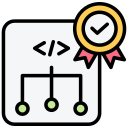What Is Low-Code, Really?
Low-code platforms let you assemble apps using visual components—forms, data models, workflows—like LEGO bricks. You still think logically, but drag-and-drop accelerates delivery and reduces boilerplate, helping beginners start confidently and experts move faster.
What Is Low-Code, Really?
No-code targets non-technical builders for simple apps, while low-code blends visual design with optional code for custom logic and integrations. Traditional coding offers full control but demands more time, specialized skills, and extensive maintenance practices.








